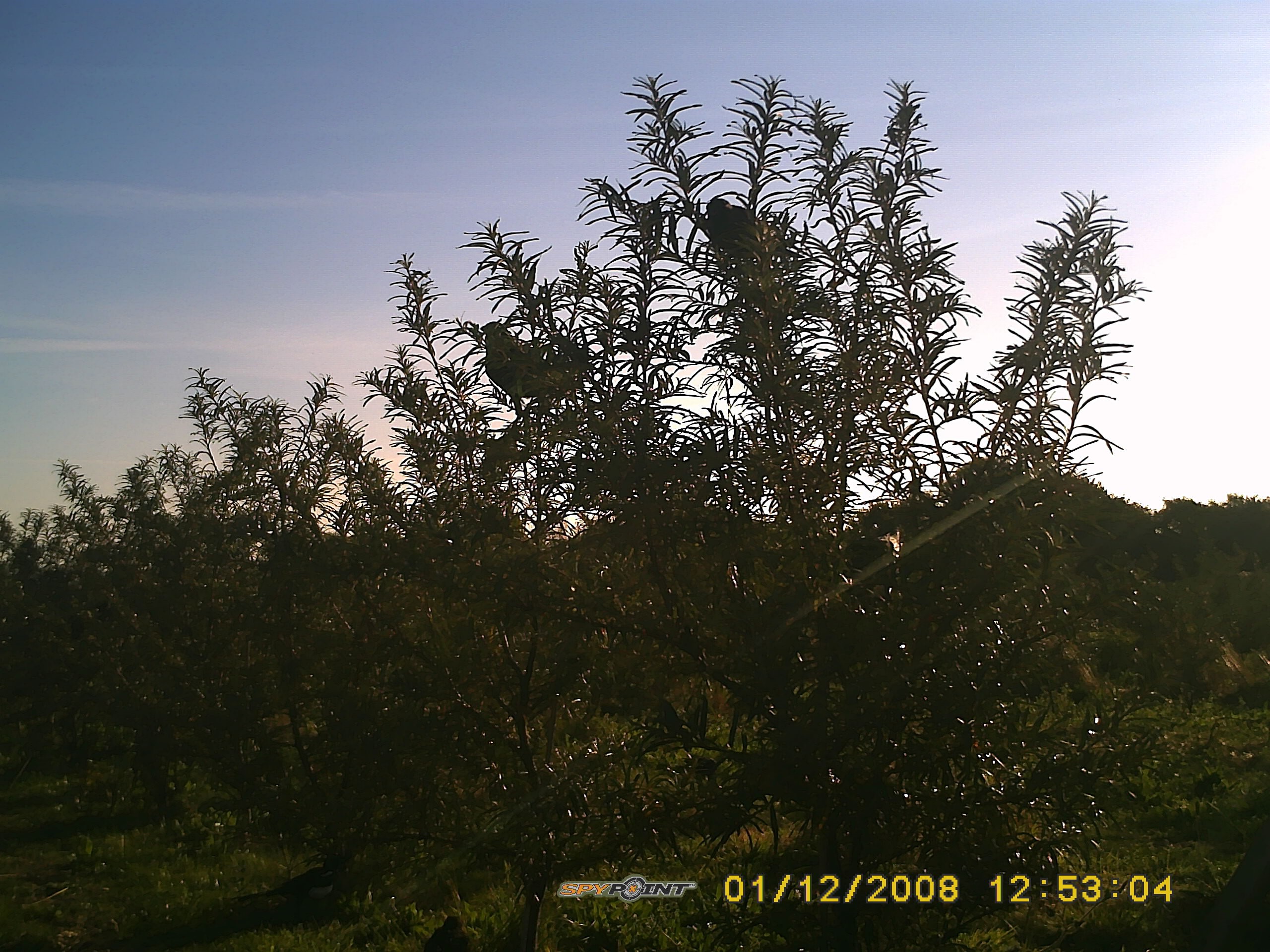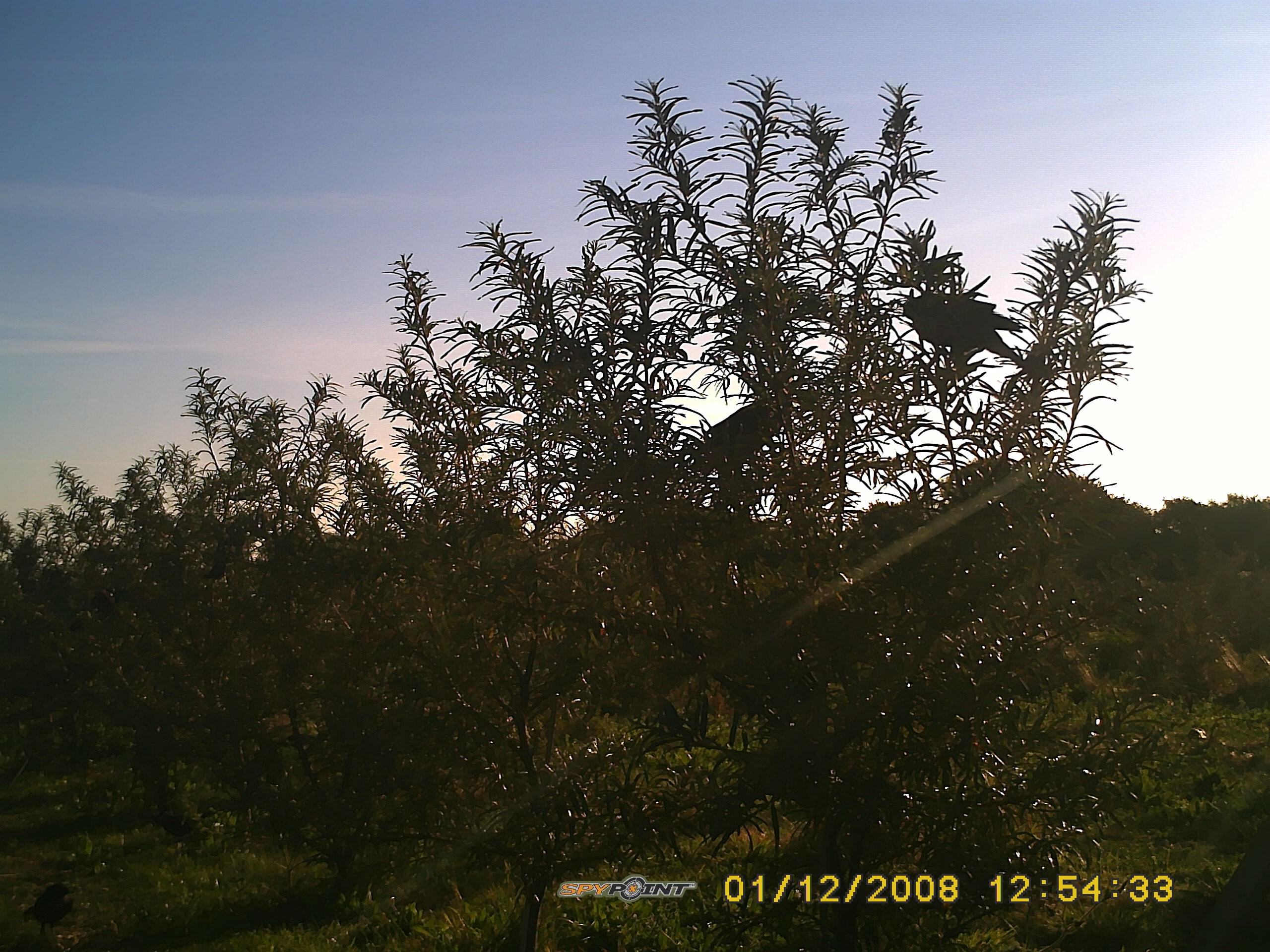

As each year goes by experience ticks a few more boxes. This morning, over breakfast we were talking about how harvest was going and what plans there were for 2015/16. I made a statement – there’s no problem that we cannot solve, and thinking back on it I think that is credible. The above photographs have been this year’s problem – forgive the fact that they are dated 2008. The camera was borrowed and I did not reset the date.
This year’s major issue has been finally discovering what has been stealing the Siberian berries. All year I have looked with suspicion at the flock of jackdaws that come and go. They are a large bird and young sea buckthorn plants are not very sturdy, so very unscientifically I had persuaded myself that these could not be my thieves. Starting in May i had put out scare crows; strings of CD discs; poles with fluttering hologram tape; florescent jackets on frames; a huge kite. The field next to the sea buckthorn is a finely cut grass one hectare area used as a model radio controlled flying airstrip. It is used most days, mainly in the afternoon and early evening. There is something on the airstrip that the birds seem to like, so if left alone they accumulate into a flock of between 50 and 100. Once they are settled in a group on the ground, they present the opportunity to use a bird scaring rocket. A firework with an extra loud explosion. Directed so that it goes off right above them, the effect is to scare them – and all those in the immediate area away from the site for two or three days.
In the winter our local environment becomes the home of another resident of siberia – The Brent goose. Flocks of several hundred or even a thousand strong are possible. When the farm had dairy cows the geese would come and graze on the pastures that we kept for the cows spring and summer grazing. It was an acceptance that once the winter turned really cold, by mid- January the geese would be hungry and nothing would deter them from eating the grass down to the roots.
Sweet sea buckthorn berries have the same level of attraction to my jackdaws. As I look at them and judge them to be just coming ripe, so the birds are judging that the berries are just to their taste also. In fact I should employ one of these birds to tell me when it is the best time to harvest my berries.
i had started to convince myself that it was not birds taking the berries as these birds are quite large and would damage the bushes. I had convinced myself that these sweet berries would be a tasty meal for mice. So I borrowed Matt’s camera that has activates on movement. he has used it on tracks and footpaths and photographed deer, and wildlife – as well as passing people who sometimes should not be there. I positioned the camera on a post 4 metres back from a row of latvian plants that had a reasonable covering of berries, straped it to a post and left it for two nights. i expected to see nocturnal movement of rodents up and down the plant stem. But no – no rodent – it was, and always had been the birds.
So next year the plan changes.
I now know the order in which my varieties ripen. I also know how quickly they can change from being unattractive to birds – to very attractive. 10 days off picking, I will net the plants, just over the rows that are coming ripe. Some years ago, Devereux farm used to host an International Scout Jamboree. It took over 180 acres of land; was every four years from 1996 to 2008; was attended by 5500 scouts staying for a week from up to 33 countries and accomodated 10,000 people on site on a daily basis. When it came to an end, one of the waste items left over was a huge pile of old water pipe. Cut to length and pushed onto metal stakes it will make ideal hoops to hold netting over the plants. This sounds like a sizable job, but the target market for these berries will be London as fresh berries so there will be sufficient value in them to justify the work.
This year has also shown that these sweet berries are a different fruit to the other European varieties at Devereux farm. The german varieties I expect to last three weeks to a month in a fridge as fresh berries without signs of deterioration. These sweet Siberian varieties will start to deteriorate at between 6 to 8 days so they need to be marketed as one would other soft fruit. It does stand to reason that the higher acid content in german varieties will control fungal growth. I have to say that the Siberian berries were not washed and were put into the fridge straight from the field.
To ensure quality I see picking fresh berries as needing some control measures in the field, particularly with respect to removing juice from damaged/split berries. I have been using a solid gel ice pack under the picking container used in the field. I think this can be improved by using two or even three gel bags frozen to mould around the bottom of the collection bowl. This will maintain a cold air environment within the bowl to reduce the temperature of the berry rapidly after picking. It should reduce any microbial activity to a minimum. Anything that helps to improve shelf life in these very special berries needs to be a real focus.
